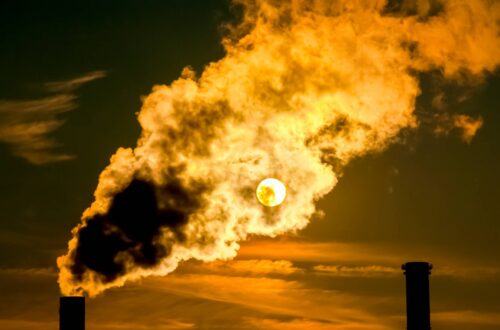
Two Major Methane Announcements Yield Historic Progress Toward a Safer Climate Future
The EPA’s new methane rule and the global Methane Alert and Response System launch at COP27 mark a major advance in cutting emissions of a super-potent global warming gas.
For decades, methane’s climate threat has flown under the radar, even as carbon dioxide dominated public discourse on climate change. Yet methane has 80+ times the global warming potential (GWP) of an equivalent amount of carbon dioxide over a 20-year timeframe.
Thus, cutting methane emissions offers an outsized opportunity to rapidly reduce greenhouse gas (GHG) emissions. A surge of recent announcements promises to improve the measurement and speed reduction of this super potent GHG.
- On Wednesday, November 9, Climate TRACE released over 70,000 data points identifying the world’s worst GHG polluters. The data makes visible the imperative for world leaders to immediately address methane’s looming climate threat.
- Two days later, global leaders were discussing how to transform evolved satellite and sensing data capabilities into action with the launch of the Methane Alert and Response System (MARS) at COP27 in Egypt hours after the US Environmental Protection Agency (EPA)’s announced its long-awaited EPA Oil and Gas rule expansion. The EPA rule now promises to reduce wasted energy and harmful emissions from covered sources by 87 percent, compared with 2005 levels.
What does the EPA’s new methane rule do?
The EPA’s move to release supplemental rules on oil and gas industry emissions is aimed at significantly reducing methane emissions from a sector believed to chronically underreport emissions. The EPA expects methane emissions reductions of 87 percent by 2030, compared to 2005 levels, for oil and gas facilities under its purview.
The new rule, announced at COP27 in Sharm El-Sheikh, sets performance standards and reporting guidelines for oil and gas facilities. When leaks are reported, companies are required to fix and address the problem.
The new rule also includes requirements for tackling reporting and emissions reductions at abandoned and inactive oil and gas wells. There are currently over three million of these across the US — many near residential neighborhoods or major population centers — which are a major contributor to ozone pollution, toxic air contamination, and public health problems.
The supplemental rule will also kick off a new program to address “super emitters” whereby credible third parties can notify operators of high-volume emissions sources to spur corrective action. Carbon Mapper analysis shows that these super emitters are responsible for 40 percent of methane emissions in the southern San Joaquin Valley in California, Uinta basin in Utah, Denver-Julesburg basin in Colorado, the Permian basin in Texas and New Mexico, as well as key regions of the Marcellus shale in Pennsylvania.
How will MARS help cut emissions?
On the same day, the global Methane Alert and Response System (MARS) was officially launched at COP as a data-to-action platform set up as part of the UNEP International Methane Emissions Observatory (IMEO) strategy to get policy-relevant data into the right hands for emissions mitigation.
MARS will use data from global mapping satellites to identify methane hot spots and attribute the emissions to a specific source, allowing UNEP to notify governments and companies about the emissions so the responsible entity can take appropriate action. It will be the first publicly available global system capable of connecting methane detection data to direct action using state-of-the-art satellites to identify major emission events, notify the responsible stakeholders, and track mitigation progress taking place on the ground. The system will be implemented with partners including the International Energy Agency, and the UNEP-hosted Climate and Clean Air Coalition.
Making our next moves on methane
RMI has played a key role in the momentous shift to methane action as a member of the Climate TRACE coalition, a founder of MiQ (leading independent certification of methane emissions reduction performance in gas operations), and a partner with Carbon Mapper in making previously invisible methane super emissions actionable.
Stay tuned for more detail on the rapidly evolving technologies, and climate action tools RMI and partners are using to make methane emissions visible and cut this looming warming threat as a down payment for a safer climate future.